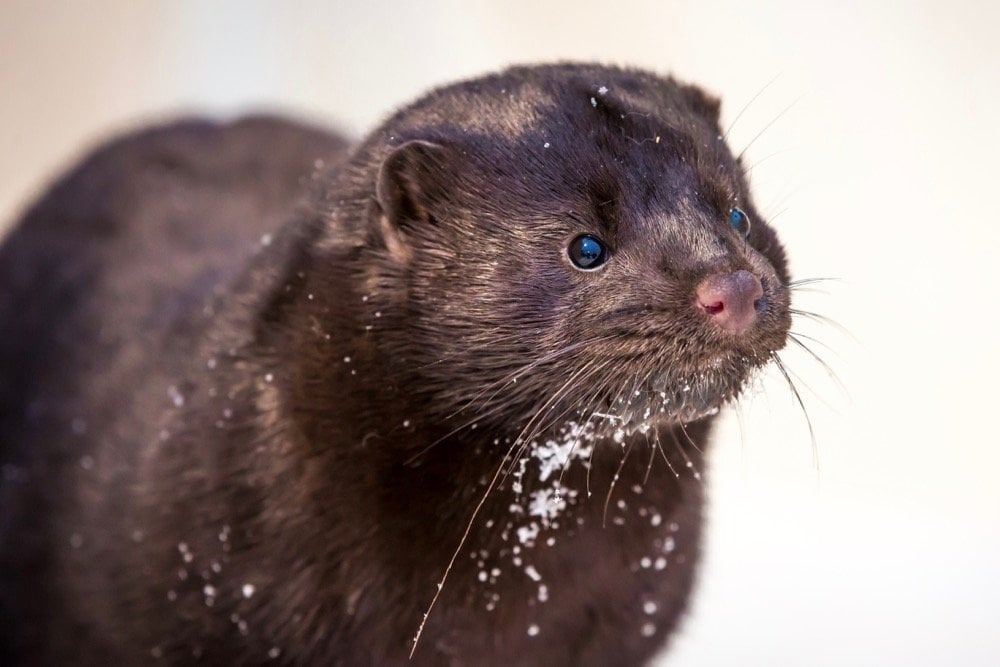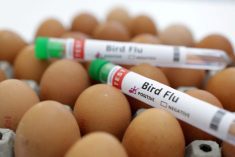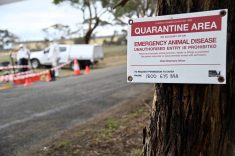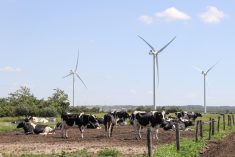Copenhagen | Reuters — Denmark will cull its mink population of up to 17 million after a mutation of the coronavirus found in the animals spread to humans, the prime minister said on Wednesday.
Health authorities found virus strains in humans and in mink which showed decreased sensitivity against antibodies, potentially lowering the efficacy of future vaccines, Prime Minister Mette Frederiksen said at a press conference.
“We have a great responsibility towards our own population, but with the mutation that has now been found, we have an even greater responsibility for the rest of the world as well,” she said.
Read Also

U.S. grains: Wheat futures rise on supply snags in top-exporter Russia
U.S. wheat futures closed higher on Thursday on concerns over the limited availability of supplies for export in Russia, analysts said.
“The mutated virus in mink may pose a risk to the effectiveness of a future vaccine,” Frederiksen said, adding that it “risks being spread from Denmark to other countries.”
The findings, which have been shared with the World Health Organization and the European Centre for Disease Prevention and Control, were based on laboratory tests by the State Serum Institute, the Danish authority dealing with infectious diseases.
The head of WHO’s emergencies programme, Mike Ryan, on Friday called for full-scale scientific investigations of the “complex, complex issue” of humans — outside China — infecting mink which in turn transmitted the virus back to humans.
Outbreaks at mink farms have persisted in the Nordic country, the world’s largest producer of mink furs, despite repeated efforts to cull infected animals since June.
The country’s police, army and home guard would be deployed in order to speed up the culling process, Frederiksen said.
Tougher lockdown restrictions and intensified tracing efforts would be implemented to contain the virus in some areas of northern Denmark, home to a large number of mink farms, authorities said.
“The worst-case scenario is a new pandemic, starting all over again out of Denmark,” director at the State Serum Institute, Kare Molbak, said. The new strain showed diminished sensitivity towards antibodies, he added.
“That’s why we have to take this extremely seriously,” Molbak said.
Minks have also been culled in the Netherlands and Spain after infections were discovered.
Authorities had registered five cases of the new strain on mink farms and 12 cases in humans.
There are between 15 million and 17 million mink in Denmark, authorities said.
Canada, at the end of 2018, had 98 mink farms, down from 237 in 2014, according to Statistics Canada.
Of the 98, 43 were in Nova Scotia, 28 in Ontario. six each in British Columbia and Newfoundland, four each in Manitoba, New Brunswick and Prince Edward Island, and three in Quebec.
Canada’s National Farm Animal Care Council (NFACC) maintains a code of practice for the care and handling of farmed mink. A five-year review was completed in 2018.
NFACC, on its website, says the code is “currently undergoing an amendment,” expected to be completed in March next year, with a public comment period now running into December.
Issues flagged as “major challenges” expected to be addressed in those amendments include pen sizes, access to nest boxes and methods of euthanasia.
— Reporting for Reuters by Nikolaj Skydsgaard and Jacob Gronholt-Pedersen; additional reporting by Stephanie Ulmer-Nebehay. Includes files from Glacier FarmMedia Network staff.















